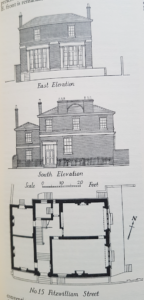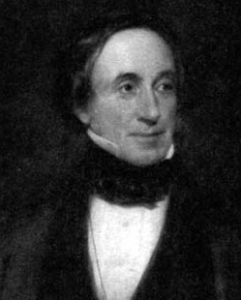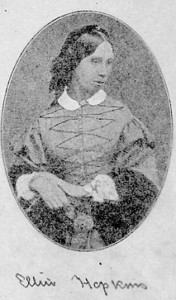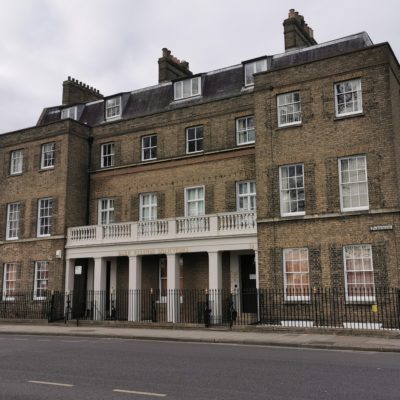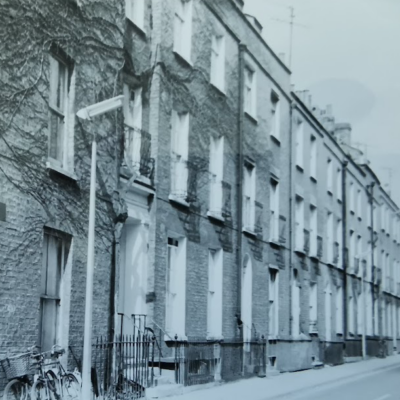Search by topic
- archaeology
- Building of Local Interest
- charity
- church
- crime
- dressmaker
- fire
- Great Eastern Railway
- Listed building
- Mapping Relief
- medieval
- oral history
- poverty
- Public House
- Rattee & Kett
- Religious House
- Roman
- scholar
- school
- Then and Now
- tudor
- women
- work
- world war one
- world war two
Search by text
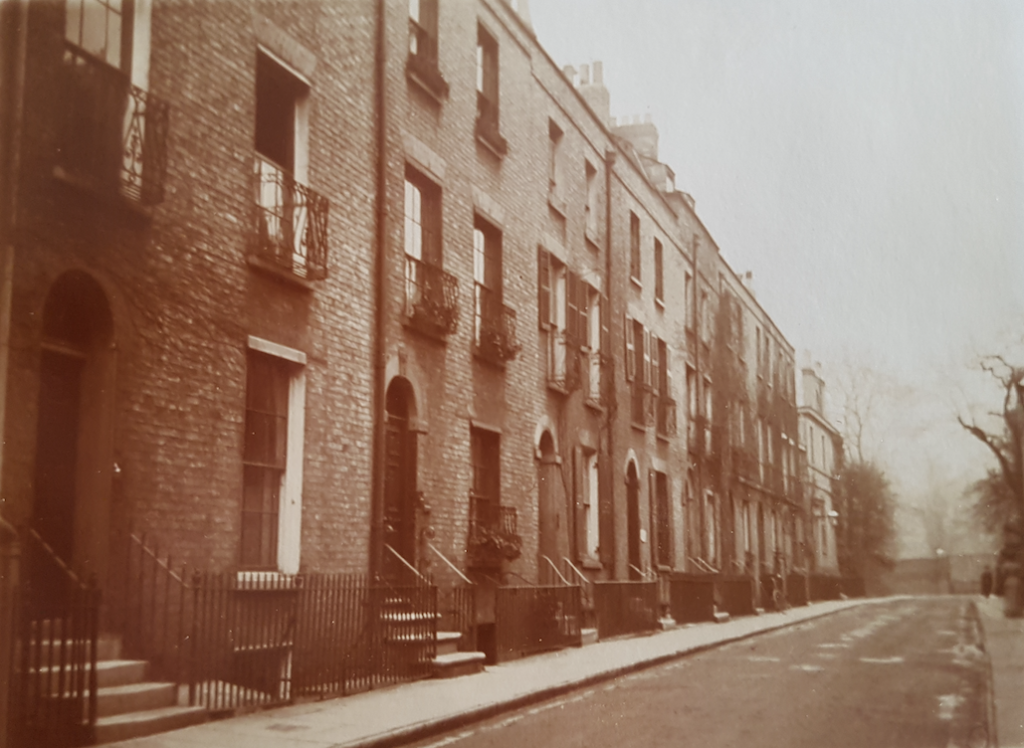 Fitzwilliam Street north side nos 23 - 15
Fitzwilliam Street north side nos 23 - 1515 Fitzwilliam Street
History 15 Fitzwilliam Road
Royal Commission Survey of Cambridge 1959: built in c.1825; the authority for the tradition that it was designed by William Wilkins has not been discovered, circumstantial evidence points rather to Charles Humfrey…. The house has many points of similarity with Scroope House. The house, though inspired by the Greek revival, present a functional composition to the street, while the E front is remarkable for the original use of the stylistic convention and an uncompromising duality in design.
1831
Caroline
Francis, b, 1830
1841 [At the time of this census William was in Nottinghamshire and Caroline and the three children were in Brighton]
William Hopkins
Caroline
Francis
Augusta Louisa, b 1833
Jane Ellis, d 1834
Sarah Boys, grandmother,
Francis Powell
1851
William Hopkins, 58, Esquire Bedell, b Notts.
Caroline, 58, b London
Kate, 20, b Cambridge
Agusta, 18, b Cambridge
Mary Stukes, visitor, 24, b Leicester
Henry Willson, 30, footman,
Margrett Macarty, 53, widow, b Suffolk
Sophie Bullock, 24, b Suffolk
Roda Pike, 23, b Swaffham
In 1861 William was in Brighton. He died shortly afterwards in Stoke Newington hospital of exhaustion and mania.
c. 1870: According ‘Period Piece’ Mrs Potts lived at this address. She was visited at this time by her first cousin, Caroline Reynolds, who later became Lady Jebb, ‘aunt Cara’ to Gwen Raverat. However, neither the 1871 or 1881 censuses have a record of a Mrs Potts living in Fitzwilliam Street.
Mrs Potts of Fitzwilliam Street: In Mary Reed Hobart’s memoir, *With Dearest Love to All*, Mrs Potts emerges as a quietly influential figure who lived on Fitzwilliam Street in Cambridge during the early 20th century. This street, known for its proximity to the Fitzwilliam Museum and several colleges, was a respectable and serene area, often housing academics, visiting scholars, and students. Mrs Potts is presented with warmth and respect. She likely ran a lodging house or provided accommodation to visitors, including Mary herself. In this capacity, Mrs Potts offered more than just a place to stay—she served as a reliable and comforting presence during Mary’s time in England, especially as an American adjusting to a different culture and environment. Described indirectly through the tone and context of the memoir, Mrs Potts comes across as kind, composed, and deeply rooted in the genteel domestic life of Edwardian Cambridge. Her household would have been one of quiet order, reflecting the values of hospitality and propriety typical of Cambridge’s middle class at the time. Though not a central character in the memoir, Mrs Potts represents the essential yet often overlooked figures who supported the intellectual and personal lives of those passing through the university city. Her presence adds a layer of domestic and social texture to the narrative, highlighting the networks of care and stability that underpinned life for many scholars and visitors. Mrs Potts’s life offers a small but meaningful window into the rhythms of Cambridge life in the early 1900s, particularly for women who maintained households that quietly sustained the academic community. (AI 2025)
1913
Mrs Pattrick
1962
Leslie Cole consulting physician
Contribute
Do you have any information about the people or places in this article? If so, then please let us know using the Contact page or by emailing capturingcambridge@
License
This work is licensed under CC BY-NC-SA 4.0





